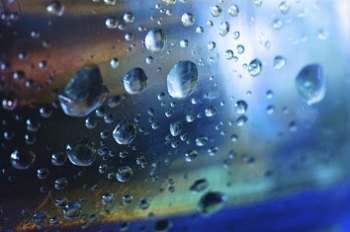Researchers at New York University’s (NYU) Center for Soft Matter Research have proposed a new theory on how glass changes from a liquid into its familiar solid state.
 ©iStockPhoto/innakote
©iStockPhoto/innakote
Our knowledge and understanding of the behaviour and properties of glass is limited.
We do not fully understand the process which allows glass to transition from a liquid to a solid state, why glass able to transport sound and heat waves, and we cannot theoretically explain the microscopic changes which take place when glass begins to solidify as it cools.
However, this is all about to change as NYU researchers have now proposed a new theory which attempts to provide answers to these important questions.
Glass is comprised of very tiny particles in a disorganised arrangements. The complicated arrangement of the particles, and how this is linked to the properties of glass in its liquid or solid state has remained a mystery until now.
The simplest example of glasses are colloidal suspensions, which behave like hard spheres. Porcelain, milk, gelatin and paint are all commonly used colloidal suspensions.
At low densities, colloids are in a liquid state but when their density exceeds a threshold value, they become a solid. At this point, crowding effects become significant as a particle is contained by its neighbouring particles, which prevents their flow. However, these particles can still ‘wiggle’ by a small amount.
James Clerk Maxwell, the Scottish physicist and founder of electromagnetism, proposed concepts for studying the stability of mechanical structures during the 19th century. The research team at NYU applied these concepts and proposed a theory for the emergence of rigidity in colloidal glasses.
The team predicted that the particles wiggle collectively in a coordinated manner. Glass is believed to be structured in such a manner that the wiggling motion has the maximum amplitude possible, without demolishing its structure.
This study has led to predictions about the glass material’s elastic response, heat transporting ability and particle dynamics. This study has been published in the Proceedings of the National Academy of Sciences.